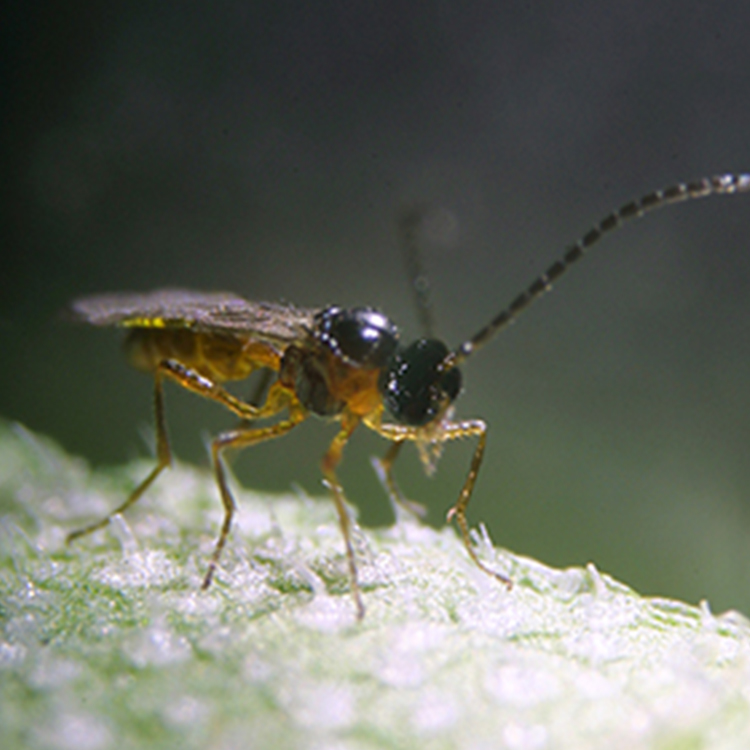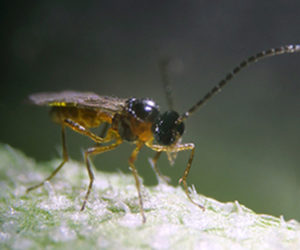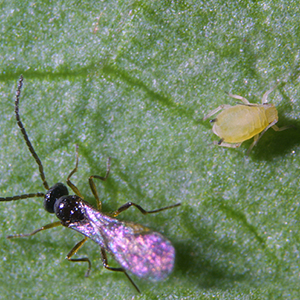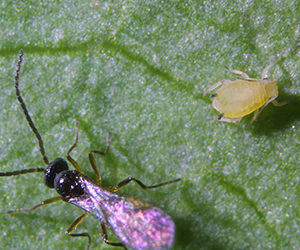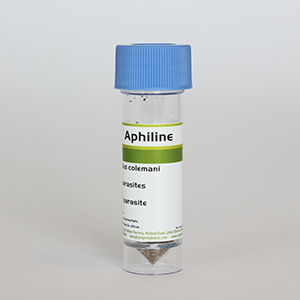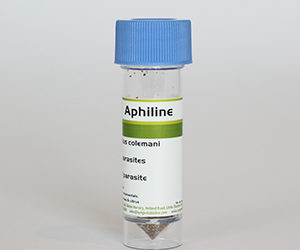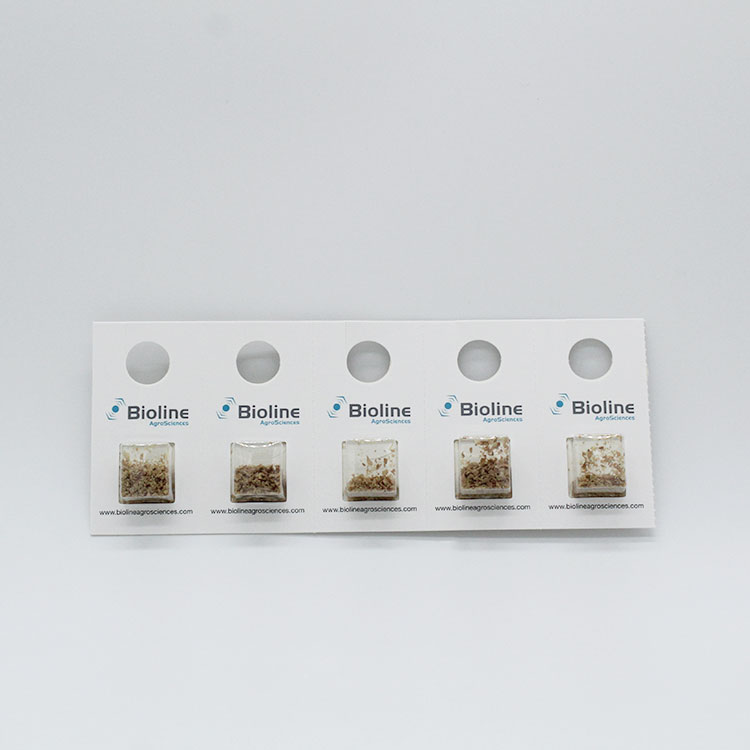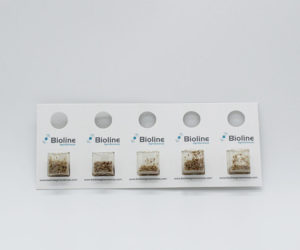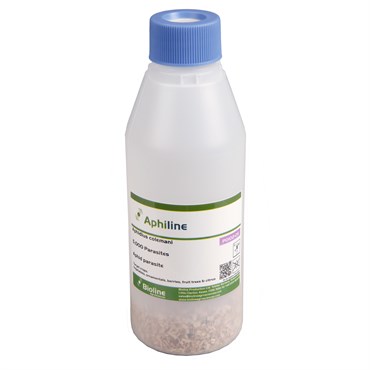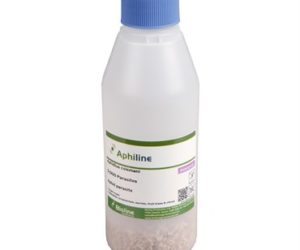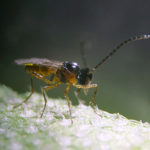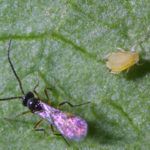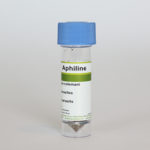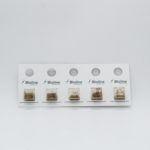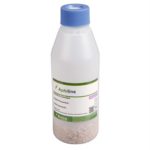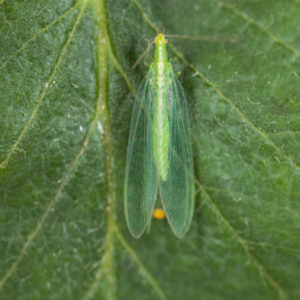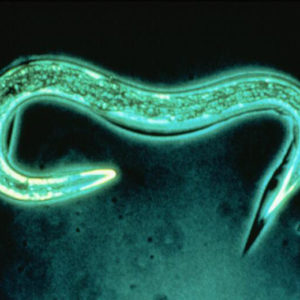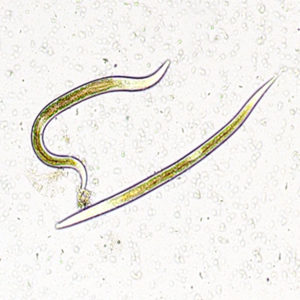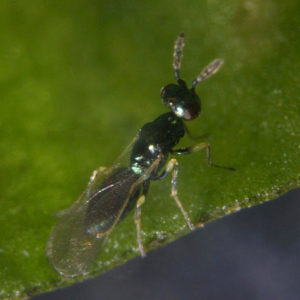Description
![]()
Aphiline contains the Braconid wasp, Aphidius colemani. This species is a highly effective hunter, flying throughout the crop to find aphid hosts. A female can parasitize approximately 300 aphids in her lifetime! Parasitism is manifested by immobility and swelling of the aphid, which eventually turns into a golden mummy. Once parasitized, the aphid quickly becomes harmless to the plant. 4 to 7 days after mummification (at 21°C), the adult A. Colemani emerges and parasitizes again.
Target Crops: All indoor and outdoor crops
Target Pest: Small Aphid species (Aulacorthum
Solani, Macrosiphum Euphorbiae, Myzussp, Sitobion Sp., Schizaphis Sp., Rhodobium Sp. & Acyrthosiphum Sp.)
Target Life Stage » Whole life cycle
Delivery Systems » Bottles, Vials & Blister Packs
Key Features of Aphiline
- Prevents aphid populations from developing and reduces moderate populations to non-damaging levels.
- Adults begin to emerge in transit, ready for immediate release.
- Not light sensitive – no diapause stage.
- Ventilation and food source available in packaging ensures adult survival in transit and storage.
- Suitable for all indoor and outdoor crops.
Pests that Aphiline Targets
- Aphids
How Aphiline Works
- The female wasp lays an egg within the aphid. The egg hatches within 2-3 days and the wasp larvae will feed on the aphid leaving a parasitized mummy on the plant.
- The colemani life cycle takes 10 days at 25°C / 77°F or 14 days at 21°C / 70°F.
- For preventive control, releases should be made weekly during periods when aphids are most likely to be found in the crop (usually in the spring or early summer).
- Where aphid colonies are already present, Aphiline can be used curatively at a higher rate, generally by releasing the parasites immediately adjacent to colonies.
- If no previous releases of Aphidius colemani have been made, aphid populations can grow rapidly and supplemental control methods may be needed.
- Continue using Aphiline preventively so aphid populations do not become a recurring problem.
- For advice on recommended release rates, consult your technical specialist.
Available delivery systems for Aphiline
- 30mL (1oz) vial containing purified mummies in sufficient quantity to yield 500 or 1,000 Aphidius colemani
- 250mL bottle containing 5,000 mummies.
- 10 blister packs containing 100 mummies per blister to yield 1000 Aphidius colemani
Handling & Storage for Aphiline
Instructions for Aphiline Vials & Bottles
- Open among plants in the greenhouse.
- With the vial held horizontally at 45° angle, carefully remove the lid.
- Release adult parasites evenly by gently tapping the opened vial while walking through the crop.
- Recap the vial and store at greenhouse temperature until more adults have hatched.
- Repeat the distribution of adults daily for 2-4 days.
- Place the open vial containing the remaining mummies upright in the crop for 3-4 days.
- Make introductions early in the day or in late afternoon/early evening.
Instructions for Aphiline Blister Pack use
- Open the box in the greenhouse.
- Remove sheet of blister packs from the envelope, and separate along perforations.
- Bend the card forward slightly at the top of the blister, and pull the tab up.
- Hang opened blister onto leaf petioles within crop so it is in a shaded position.
Storage and transport of Aphiline
- Keep out of direct sunlight.
- Transport and store at 6-10°C /43-50°F.
- Use within 18 hours of receipt.
Addition Information for Aphiline
Aphiline is available in the following units:
- 250 unit / 250ml / ml bottle
- 500 / vial, 1000 / vial, 5,000 / vial
- 250 ml bottle
- 10 bilsters *
- 100 / blister
Aphiline Downloads
- Information is forthcoming.
